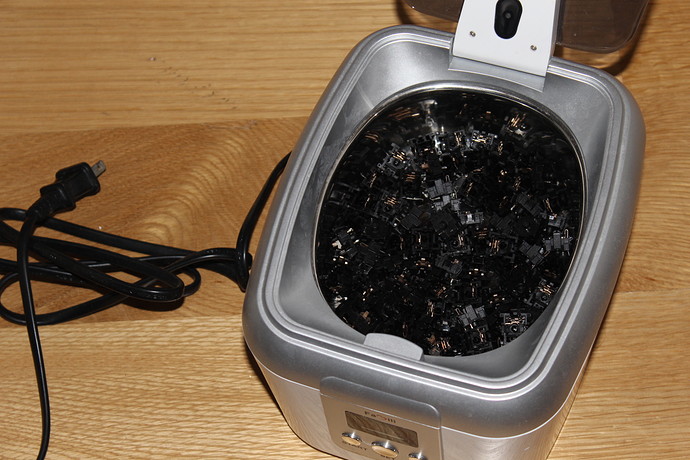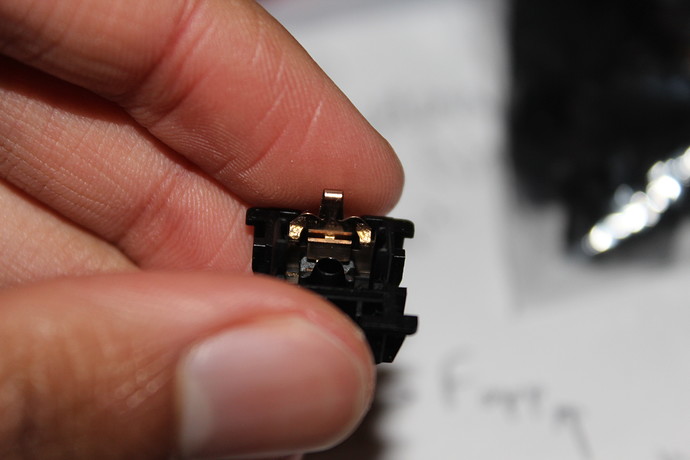Count yourself lucky then. Retooled blacks I got were scratchy.
I mean, well, they felt quite scratchy before polishing and they still feel so after the polishing where is luck in that…
Well I might be setting the bar too high since my smoothness ideal is jwk so idk.
0.5 micron paste polished blacks are not as smooth as JWK linears. It’s closer to Cream level of smoothness. I have not tried 0.25 nor 0.1 micron pastes so can’t say whether they can be used to reach higher level of smoothness. I also never reached a full week of polishing. These and other areas could be explored by others in the future.
Retooled black’s scratchiness is more like white noise. They’re initially usable after lubing but, while in-use, you begin to notice what feels like white-noise at your fingertip. Once you notice it, it becomes unignorable and highly distracting.
I think what the 0.5 micron paste does is reduce the white noise to a level that is, with lube, ignorable in-use. While my polished black board may not be as smooth as NK Silk/Dry, they are far from being scratchy and sound far superior.
Imagine doing multiple grits, that would be insane amount of work
I just tried it on some 2013 cherry black and it made it very nice.
I think diamond paste is based. It’s so freaking good.
Makes pretools feel usuable. I tested lubing them (the stock unpolished), and they have the same smoothness as the smoothened-diamond-pasted one. It’s insane. I’m gonna do this to all 108 of my pretools. Will take several hours, but I love to do this kind of work!
Glad to know polishing helped. For me, it’s an affordable way to experience what vintage blacks may have been but I think even vintage black owners could use polishing to even out the smoothness since not all vintage switches are equally worn during use.
I have polished few ks-3 gateron yellow switches and I report that there are no visual marks on the stem due to the polishing (as I have seen on mx black switches)
Are you tilting the board when you’re polishing the switches? When polishing, I try to push the switches at odd angles to force the stem to be in contact with housing.
Yes, I follow that reasoning. More friction is better because it means more abrasion and therefore more smoothening of the surfaces.
I cleaned the factory lubricant off the blacks, and now I will ultrasonic clean to try to remove any other impurities. After this bottom housing cleaning, I will ultrasonic the stems and apply diamond paste.
the second image shows the factory lubricant that I had to remove
Thx. Didn’t know Cherry blacks are prelubed.
Mine were slightly lubed on the stem legs and leaf.
I did not remove that lube since I did not think leg-to-leaf contact should undergo polishing
No I did not, I just rolled the ball over them.
Not sure I understand why the plate needs be tilted, since the ball technique seems to handle the offcenter hits well
Hi everybody. I think the leaf is causing the most problems with the scratchiness on the cherries. I can tell because it consistently feels scratchy at the top of the keypress, even when using a smooth Cherry top.
Cherry MX Red Switch - Animated GIF_MXBlue_v001 (1).gif (700×700) (kingston.com)
I found this GIF helpful for locating the problem.
What I will do is actuate the switch in the direction of the leaf, I tried it on a couple switches and it seemed to fix the scratchy problem. I cannot wait to remove the diamond paste and see what they feel like, I think these might have turned into really smooth switches. From rags to riches lol
I agree on the top of the keystroke to be the worst part of the scratch. last I worked on this I disassembled the switches and was thinking it was more of the housings themselves. I had scratchiness even after removing the leaf. l did a fair amount of mixing and matching switch parts between stock and polished but I don’t think messed with a polished leaf vs stock.
You can verify by removing a leaf altogether and assembling the switches to see if it is any better.
Top-side of stem legs should be polished for best result. Without it, it won’t feel smooth.
Ok my friends, I have probably spent around three hours testing the diamond paste.
It helps a lot if you have reasonably smooth switches to begin with; these are probably some of the scratchiest stock switches I have ever used (from 2013 horrible Cherry molds). Remember, the smoother the switch, the less work you need to do.
So far, I have completed around twenty switches. I apply the paste, grind the switch parts together, reopen, and grind them again. I found that this near eliminates the scratchiness that I feel at the top of the press.
Like I said before, I think they are going to feel incredible once the paste is removed and the switches are cleaned. I am working on a keyboard design with my friend, and they are going to go into that prototype if it works well.
I am still uncertain what lubricant I should use.
I have changed the springs to TX 65g 16mm. I will film and lube all of them after cleaning off the paste.
205g0 is what I lubed my set of polished blacks with.
I was thinking in buying diamond paste to polish my vintage blacks, but I don’t know where I can buy it in my country, so I tried to polish the stems with toothpaste and a dremel and it worked very well, I polished the stems and they are cleaned with a ultrasonic cleaner. The feel is similar to tangerines now.
I am not familiar with dremel. What setting did you use, and how did you end up polishing it?

